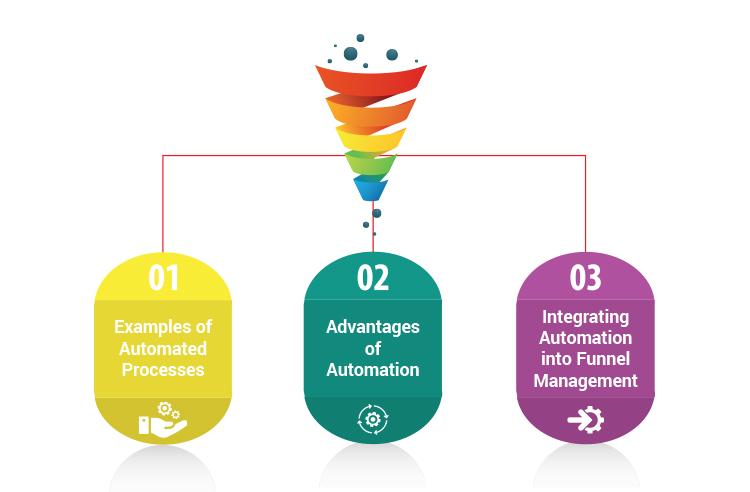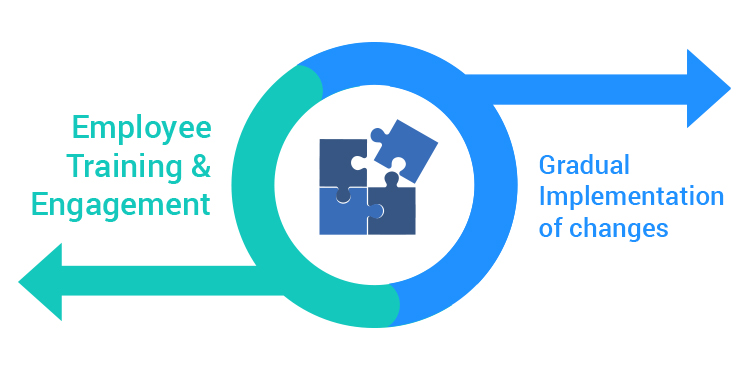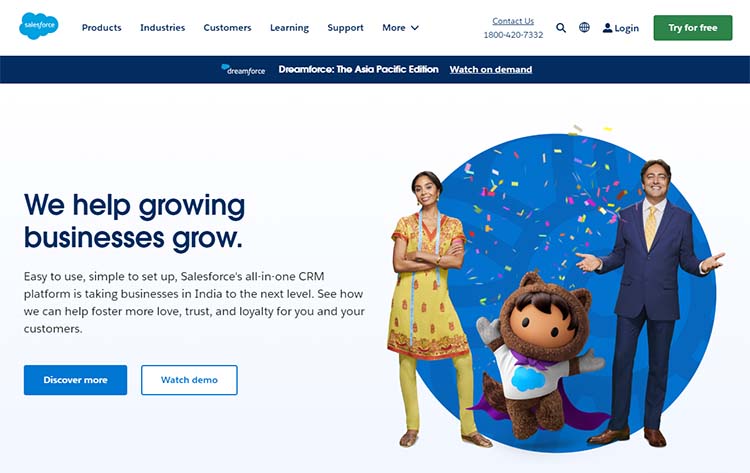Funnel Management in a Complex World: Streamlining Workflows and Embracing Automation

In the dynamic realm of modern business, where change is the only constant, the need for efficient and effective processes has never been more crucial. One key aspect that businesses cannot afford to overlook is Funnel Management. It serves as the compass in navigating the intricate journey from potential lead to satisfied customer. In this blog post, we will delve into the world of Funnel Management, exploring how it can be optimised in the face of today’s complex business landscape through the twin pillars of Streamlining Workflows and Embracing Automation.
What is Funnel Management?
At its core, Funnel Management is the art and science of guiding potential customers through the sales process, from initial awareness to conversion and beyond. Imagine it as a virtual pathway where prospects enter at the top, and, through a series of steps, a portion emerges at the bottom as loyal customers. Understanding and efficiently managing this process can make or break a business, especially in a world that constantly demands adaptation and innovation.
Importance of Funnel Management in Today’s Complex World
Why is Funnel Management more critical than ever? The answer lies in the complexity of the modern business landscape. With numerous channels and touchpoints, businesses are interacting with customers in diverse ways. The customer journey is no longer a linear path; it’s a dynamic process influenced by various factors, including digital platforms, social media, and evolving consumer behaviours.
Streamlining Workflows and Embracing Automation
To successfully navigate this complexity, businesses must focus on two key strategies: Streamlining Workflows and Embracing Automation. Streamlining workflows involves optimising and simplifying the processes within the organisation, while Embracing Automation entails leveraging technology to handle repetitive tasks, enhance efficiency, and reduce the margin of error.
Importance of Funnel Management
Let’s begin by understanding the foundation of Funnel Management—the Sales Funnel. Think of it as a visual representation of the customer journey, divided into stages that mirror the decision-making process. At the top of the funnel, potential customers become aware of a product or service. As they progress through the middle, they consider and evaluate their options. Finally, at the bottom, they make a purchase decision.
Visualising the Customer Journey
Visualising the customer journey is akin to having a map for a cross-country road trip. It helps businesses anticipate the twists and turns, enabling them to proactively address customer needs at each stage. This visualisation is a crucial aspect of Funnel Management, offering insights that guide marketing, sales, and customer service efforts.
The Complexity of Modern Business

While the concept of the Sales Funnel remains constant, the modern business landscape introduces new layers of complexity.
Multiple Channels and Touchpoints
In the past, businesses primarily interacted with customers through a few traditional channels. Today, the scenario has evolved dramatically. Customers may discover a product through social media, conduct research on a website, seek recommendations from online reviews, and finally make a purchase through a mobile app.
Diverse Customer Demands
Customer expectations have also evolved. They demand seamless experiences across channels, personalised interactions, and quick responses to their queries. Meeting these diverse demands requires businesses to adapt and optimise their Funnel Management processes continuously.
Streamlining Workflows

Assessing Current Workflows
Before embarking on the journey of streamlining workflows, it’s essential to conduct a thorough assessment of your current processes. Identify bottlenecks—those areas where the flow of work slows down or gets stuck. Pinpointing these challenges is the first step toward effective streamlining.
Identifying Bottlenecks
Bottlenecks can occur at various stages of the customer journey, from lead generation to the final conversion. For instance, a delay in responding to customer inquiries or a cumbersome approval process can hinder the smooth flow of your funnel. By recognizing these bottlenecks, you can implement targeted improvements.
Recognizing Inefficiencies
Inefficiencies can manifest in redundant tasks, manual data entry, or miscommunication between teams. Recognizing these inefficiencies requires a keen eye and an openness to feedback from employees who are directly involved in executing these workflows. Their insights can be invaluable in uncovering hidden inefficiencies.
Benefits of Streamlining

Improved Efficiency
The primary goal of streamlining workflows is to enhance efficiency. By eliminating bottlenecks and addressing inefficiencies, businesses can significantly reduce the time it takes to move prospects through the funnel. This not only accelerates the sales process but also frees up resources to focus on strategic initiatives.
Enhanced Collaboration
Streamlining workflows often involves breaking down silos between different departments. When teams collaborate seamlessly, information flows more freely, and everyone is on the same page. This not only speeds up processes but also improves the overall customer experience as every touchpoint becomes more cohesive.
Practical Tips for Workflow Optimization

Mapping Out Processes
Start by mapping out your existing processes. Create a visual representation that outlines each step of the workflow, from the first customer interaction to the final sale and beyond. This mapping exercise provides a clear picture of the entire customer journey, making it easier to identify areas for improvement.
Eliminating Redundancies
Redundant tasks are common culprits in slowing down workflows. Identify tasks that can be automated or consolidated to reduce duplication of effort. This may involve investing in software solutions that streamline repetitive processes, allowing your team to focus on tasks that require human expertise.
Implementing Agile Practices
Embrace agile practices within your organisation. Agile methodologies promote flexibility and responsiveness, enabling teams to adapt to changing circumstances quickly. This is particularly important in a rapidly evolving business landscape where customer preferences and market dynamics can shift unexpectedly.
The Role of Automation in Funnel Management

Automation is a game-changer in Funnel Management, allowing businesses to handle routine tasks more efficiently and allocate human resources to more strategic endeavours. In the context of the sales funnel, automation can be applied to various stages, from lead generation to post-purchase engagement.
Automation involves using technology to perform tasks with minimal human intervention. In the context of Funnel Management, this could mean automating email campaigns, lead scoring, or even parts of the customer service process. The goal is to streamline operations and enhance overall productivity.
Examples of Automated Processes
- Email Marketing Automation: Schedule and personalise email campaigns based on customer behaviour, ensuring timely and relevant communication.
- Lead Scoring Automation: Implement algorithms to score leads based on their interactions, helping sales teams prioritise high-value prospects.
- Customer Support Automation: Use chatbots and automated responses to handle routine customer queries, providing instant assistance and freeing up human agents for more complex issues.
Advantages of Automation
Time and Cost Savings
One of the most significant advantages of automation is the time and cost savings it offers. Tasks that would otherwise require hours of manual effort can be completed in a fraction of the time, allowing teams to focus on strategic initiatives that contribute directly to business growth.
Reduced Margin of Error
Human error is an inherent part of manual processes. Automation significantly reduces the margin of error by performing tasks consistently and accurately. This is particularly crucial in Funnel Management, where precision in communication and data management is paramount.
Integrating Automation into Funnel Management
Identifying Repetitive Tasks
Begin by identifying tasks within your Funnel Management processes that are repetitive and rule-based. These are prime candidates for automation. Common examples include data entry, lead nurturing emails, and social media posting.
Choosing the Right Automation Tools
Selecting the right automation tools is crucial for success. Consider factors such as ease of integration with existing systems, scalability, and the specific needs of your business. Popular tools include HubSpot, Marketo, and Pardot, each offering a range of features to streamline Funnel Management processes.
Common Hurdles in Funnel Management

While the benefits of streamlining workflows and embracing automation are clear, it’s essential to acknowledge and address the challenges that may arise during implementation.
Resistance to Change
Implementing changes to established workflows can be met with resistance from employees accustomed to existing processes. Address this by fostering a culture of continuous improvement, emphasising the positive impact on efficiency and overall job satisfaction.
Integration Issues
Integrating new technologies and automation tools with existing systems can be complex. Ensure proper training for your team, and work closely with IT experts to smooth the integration process. Investing in user-friendly tools with robust support can mitigate integration challenges.
Strategies for Overcoming Challenges

Employee Training and Engagement
Provide comprehensive training to employees on new workflows and automation tools. Emphasise the benefits of these changes, not just in terms of efficiency gains but also in terms of professional development and job satisfaction.
Gradual Implementation of Changes
Rather than implementing drastic changes overnight, consider a phased approach. Gradually introduce workflow optimizations and automation tools, allowing employees to adapt gradually. This incremental approach minimises disruptions and gives teams the time to acclimate to the new processes.
Case Studies of Companies Benefiting from Funnel Management
The real test of any strategy is its impact in real-world scenarios. Let’s explore a couple of case studies that showcase how businesses have successfully implemented Funnel Management strategies to achieve tangible results.
Improved Sales Conversions
Salesforce – Optimising Lead Nurturing

Salesforce, a global leader in customer relationship management (CRM), faced the challenge of converting leads more efficiently. By implementing a streamlined lead nurturing process and integrating automation tools within their CRM, Salesforce achieved remarkable results. The company tailored their outreach based on prospect behaviour and engagement, leading to a substantial increase in the conversion rate from leads to paying customers. Through a data-driven approach and continuous refinement, Salesforce demonstrated how Funnel Management can significantly impact sales conversions in a highly competitive market.
Enhanced Customer Satisfaction
Amazon – Revolutionising Post-Purchase Engagement

Amazon, the e-commerce giant, is no stranger to the importance of customer satisfaction. To enhance the post-purchase journey, Amazon leveraged automation to transform its customer service processes. By implementing advanced chatbot technology for handling routine inquiries and automating order tracking updates, Amazon achieved unparalleled results. The implementation not only reduced response times but also elevated customer satisfaction scores. Amazon’s commitment to providing a seamless post-purchase experience through streamlined and automated processes showcases the power of Funnel Management in establishing and maintaining customer loyalty.
These real-world examples illustrate how industry leaders strategically applied Funnel Management principles to overcome challenges and achieve tangible business outcomes. As we continue exploring the intricacies of Funnel Management, these cases serve as inspiration for businesses of all sizes looking to navigate the complexities of the modern business landscape.
Conclusion
Whether you’re a seasoned business professional or just starting your entrepreneurial adventure, the principles of Funnel Management are universal and adaptable. In the complex world of business, the key lies in navigating with purpose and embracing the tools that make the journey smoother.
Now, as you embark on refining your own Funnel Management processes, we invite you to consider a powerful resource that can expedite your journey — CF Funnels templates. These templates, offered by renowned experts in the field, provide a ready-made framework for streamlining your workflows and incorporating automation seamlessly.
In navigating the intricate landscape of business, success hinges not solely on grasping the principles of Funnel Management, but equally on the artful execution of these principles. CF Funnels templates offer a shortcut to success, providing tested and proven structures that can be tailored to your specific needs. Whether you’re a seasoned professional or a budding entrepreneur, these templates are designed to simplify your path, allowing you to focus on what truly matters — growing your business.












